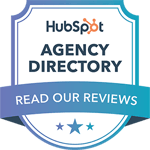
Driving qualified traffic and converting leads is on the radar of B2B companies that compete for the attention of their target audience. The ability to rank your landing pages on search engine results pages (SERPs) through effective landing page SEO makes all the difference. A well-crafted meta description can enhance click-through rates (CTR) by providing clear and relevant information to users, which potentially increases traffic to the landing page.
Follow this guide to learn how to design and develop SEO-friendly landing pages that rank well in search results and drive high-converting traffic to your site. Optimizing landing pages for SEO is crucial to enhance visibility and drive qualified traffic.
Discover the best practices and proven strategies for leveraging SEO to boost your landing page’s performance. Covering everything from keyword research and content optimization to technical SEO and conversion rate optimization (CRO), you’ll find all the essential elements to stay ahead of the curve and dominate your niche in the upcoming year.
Understanding Landing Page SEO
A landing page is a standalone web page designed to serve a specific purpose, such as collecting leads, promoting a product or service, or driving a particular action from the visitor. Unlike a typical website page, landing pages are highly focused and tailored to a marketing campaign or offer.

Regarding SEO, landing pages present a unique set of challenges and opportunities. While general website SEO focuses on improving your online presence's overall visibility and authority, landing page SEO is about optimizing individual pages to rank for specific, high-intent keywords and drive conversions.
Search engines like Google are the primary source of organic traffic for many businesses, and the ability to rank your landing pages can be the difference between a successful campaign and a missed opportunity.
SEO Best Practices for Landing Pages
With increased competition for top-ranking positions, implementing proven landing page SEO tips is crucial to driving high-quality traffic and conversions. Landing page SEO optimization involves various techniques, from keyword research to technical on-page optimization.
Keyword Research and Selection
The foundation of any successful landing page optimization strategy begins with thorough keyword research. By identifying the most relevant and high-performing keywords for your products or services, you can ensure your content is tailored to what your target audience is actively searching for.

Start by brainstorming a list of keywords related to your offering. These can be broad, industry-focused terms and, more specifically, long-tail phrases.
When evaluating potential keywords, consider factors such as search intent, relevance to your business, and the level of competition. Aim to balance high-volume, competitive terms and more niche, long-tail keywords with lower search volume but higher conversion potential.
|
Boost Your Page’s Reach and Relevance Learn how to bring your landing pages to the top with effective SEO tips and see how optimized websites can improve your conversions.
|
Here’s your short landing page SEO checklist for keywords:
- Identify the most relevant and high-intent keywords for your landing page.
- Utilize tools like Google Keyword Planner, Ahrefs, and Semrush to conduct thorough keyword research.
- Prioritize long-tail keywords that align with your target audience's search intent.
- Ensure your selected keywords are realistic to rank for based on your domain authority and competition.
Content Optimization
With your target keywords identified, optimizing your landing page content for maximum SEO impact takes time. Craft compelling, keyword-rich headlines and subheadings that clearly communicate your offering's value proposition. Ensure these key elements are placed within the page's content and structure.
Naturally, incorporate your primary and secondary keywords throughout your copy, being mindful not to overdo it and risk keyword stuffing. Focus on creating informative, engaging content that addresses your target audience's needs and pain points.

Remember, quality is more important than quantity for landing page content. Short, well-written sections that offer real value to the reader will always do better than long, keyword-filled text.
- Craft compelling, SEO-friendly content that speaks directly to your target audience.
- Incorporate your primary and secondary keywords throughout the page, including in the headline, subheadings, and body text.
- Ensure your content is well-structured, with clear and scannable sections.
- Leverage visuals like images and videos to enhance the user experience and support your messaging.
Technical SEO
While content is king, the technical aspects of your landing page also play a crucial role in SEO performance. Ensure your URLs are clean and keyword-optimized and that your meta tags (title, description, and keywords) accurately reflect the page’s content. A well-crafted meta description can improve search rankings and enhance click-through rates by providing clear and relevant information to users.

Implement schema markup to provide search engines with additional context about your page, such as product details, reviews, or breadcrumb navigation. This structured data can enhance your search result snippets, increasing click-through rates and visibility.
Mobile optimization is another essential technical consideration. With most searches now conducted on mobile devices, Google’s algorithms heavily prioritize mobile-friendly websites. Optimize your landing pages for seamless user experience across all devices, and consider implementing accelerated mobile pages (AMP) for lightning-fast loading times.
- Optimize your landing page's URL structure, including the inclusion of your target keywords.
- Ensure your meta tags (title, description, and header tags) are properly formatted and keyword-focused.
- Implement schema markup to provide additional context and enhance your search engine listings.
- Optimize your landing page for mobile responsiveness, as Google now prioritizes mobile-friendly content.
- Optimize your page speed by compressing images, minifying code, and leveraging browser caching.
User Experience (UX) Design
Finally, don't overlook the impact of user experience (UX) design on your landing page's SEO performance. Elements like intuitive navigation, clear calls-to-action, and visually appealing layouts can significantly influence user engagement and search engine rankings.
Ensure your landing pages load quickly, emphasizing optimizing image and video assets. Conduct A/B testing to identify the design elements that resonate most with your target audience and drive the highest conversion rates.

By aligning your landing page UX with user needs and search engine best practices, you'll create a winning combination that elevates your SEO results and delivers tangible business outcomes.
- Prioritize a clean, intuitive, visually appealing design that enhances the user experience.
- Ensure your call-to-action (CTA) is prominent, clear, and strategically placed to encourage conversions.
- Optimize your landing page's layout and structure to guide visitors toward the desired action.
- Conduct user and A/B testing to continuously refine your UX and improve conversion rates.
Advanced On-Page SEO Strategies
While basic SEO best practices are essential, truly exceptional landing page optimization demands a more in-depth and nuanced approach.
Visuals as Powerful SEO Allies
It's no secret that visuals play a major role in modern web design and user experience. But did you know that optimizing your images and videos can also move the needle on your landing page SEO?
Research shows that pages with relevant, high-quality visuals can see a 47% increase in organic traffic compared to text-only content. By strategically incorporating visual elements, you can captivate your audience, enhance engagement, and signal to search engines that your landing page offers a superior user experience.

So, what are the key best practices for optimizing visuals for SEO success?
1. Keyword-Rich File Names and Alt Text
Descriptive file names and alt text are crucial for image and video SEO. Avoid generic labels like "IMG_1234.jpg" and instead use keywords that accurately describe the visual asset. This helps search engines better understand and index your content.
For example, an image of a green mountain bike could have a file name like "green-mountain-bike.jpg" and alt text like "Green mountain bike on a forest trail."
2. Compress for Speed
Visually striking imagery and video content can quickly balloon page load times if not properly optimized. Utilize image and video compression techniques to reduce file sizes without sacrificing quality. Tools like Squoosh, TinyPNG, and Handbrake can streamline this process.
Faster loading times are a known Google ranking factor, so compressing visuals is a simple yet impactful way to improve your landing page SEO.
3. Use Structured Data
Implementing schema markup, such as the "image" or "video" data types, provides search engines with additional context about your visual assets. This enhances the appearance of your search result snippets, increasing click-through rates and visibility.
4. Optimize for Mobile
With mobile-first indexing now the norm, ensure your landing page visuals are optimized for seamless viewing on smaller screens. Consider implementing responsive design techniques and serving mobile users with appropriately sized image and video files.

- Optimize images and videos with appropriate file names, alt text, and captions.
- Leverage visual content to support and reinforce your messaging, making it more engaging and memorable.
- Ensure your visuals are optimized for fast loading times to maintain a positive user experience.
Aligning SEO and Conversion Rate Optimization
While boosting organic visibility is critical, the true test of landing page success lies in driving meaningful conversions. This is where the strategic alignment of SEO and conversion rate optimization (CRO) becomes a game-changer.

By merging these two disciplines, you can create a powerful feedback loop that amplifies the impact of your efforts. Here's how to get started:
1. Identify High-Priority Landing Pages
Analyze your landing pages to determine which ones offer the greatest revenue potential or strategic importance. Focus your SEO and CRO optimization efforts on these high-priority pages to maximize your return on investment.
2. Conduct In-Depth Keyword Research
Thorough keyword research is the foundation of both SEO and CRO. Uncover the terms and phrases your target audience is actively searching for, and then evaluate their commercial intent, search volume, and competition levels.
Prioritize keywords that drive organic traffic and are more likely to convert users into leads or customers.
3. Craft Persuasive, Conversion-Focused Content
With your target keywords identified, craft landing page content that seamlessly blends SEO best practices with conversion-centric messaging. Engage your visitors with compelling value propositions, clear calls to action, and a smooth, intuitive user experience.
A/B testing different content variations can help you identify the most effective approaches.
4. Optimize for Mobile Usability
As mentioned earlier, mobile optimization is critical for both SEO and CRO. Ensure your landing pages deliver a frictionless experience on smaller screens with responsive design, fast load times, and mobile-friendly navigation.
5. Implement Robust Analytics and Tracking
Leverage advanced analytics and conversion tracking tools to measure the performance of your landing pages. Continuously monitor metrics such as bounce rate, time on page, and goal completion rate to identify opportunities for improvement.
Combining SEO and CRO can create a positive cycle in which better search visibility results in more conversions, and higher-converting landing pages improve your organic rankings.
- Align your SEO efforts with CRO strategies to create a holistic approach to landing page optimization.
- Experiment with different CTA placements, messaging, and design elements to improve conversion rates.
- Leverage user behavior data and heatmaps to identify areas for improvement on your landing page.
- Continuously test and iterate on your landing page design and content to optimize for both SEO and conversions.
SEO landing page examples:


Link Building for Landing Pages
Backlinks are the lifeblood of any successful landing page optimization strategy. However, link-building for landing pages requires a nuanced approach.
Generic link-building tactics often fail. You need to be strategic, targeting backlinks that boost your domain authority and directly support your landing page's conversion goals. This could mean securing guest post placements on industry blogs, leveraging comarketing partnerships, or optimizing your internal linking structure.

It's a long game, but the payoff is worth it. Investing in thoughtful, sustainable link building for your landing pages is one of the most impactful ways to future-proof your B2B SEO strategy and stay ahead of the competition.
- Develop a targeted link-building strategy to acquire high-quality, relevant backlinks to your landing pages.
- Leverage guest posting, influencer outreach, and other link acquisition tactics to build authority and improve rankings.
- Focus on earning backlinks from industry-relevant, high-authority websites to signal the value and relevance of your landing pages to search engines.
Analyzing and Testing Landing Page Performance
As a B2B tech company, your website's landing pages are critical in capturing qualified leads and driving conversions. Optimizing these pages for search engine optimization (SEO) ensures they attract the right audience and compel them to take the desired action.
To evaluate the SEO performance of your landing pages, there are several key tools and metrics to track:
| Metric | Description |
| Organic Traffic | Monitor the volume and quality of visitors arriving at your landing pages through organic search. Tools like Google Analytics can provide insights into traffic sources, bounce rates, and time on page - all valuable indicators of how well your pages rank and resonate with users. |
| Keyword Rankings | Track where your landing pages rank for your target keywords. Tools like Google Search Console, Ahrefs, or Semrush can help you identify your current positions and opportunities to improve visibility for high-intent search queries. |
| Conversion Rates | Analyze how effectively your landing pages drive the desired conversions, whether form submissions, content downloads, or sales inquiries. Optimize for maximum conversion by identifying and addressing friction points in the user experience. |
| Technical Optimizations | Ensure your landing pages are technically sound from an SEO perspective. This includes page speed, mobile friendliness, schema markup, and canonicalization, which can impact rankings and user engagement. |
- Utilize analytic tools and SEO analytics platforms to monitor the performance of your landing pages.
- Track key metrics such as organic traffic, conversion rates, and search engine rankings to identify areas for improvement.
- Analyze user behavior data to understand how visitors interact with your landing pages and where they drop off.

In addition to these performance insights, A/B testing is a powerful way to refine your landing page SEO and conversion strategies. By experimenting with different elements like headlines, calls-to-action, images, and form layouts, you can systematically identify the highest-performing variations and continually improve your results.
- Implement A/B testing to compare different variations of your landing pages and determine the most effective elements.
- Experiment with different content, design, and CTA elements to optimize for better SEO and conversion outcomes.
- Use the insights gained from A/B testing to refine your landing page strategies and ensure you deliver the best possible user experience.
|
Boost Your Page’s Reach and Relevance Learn how to bring your landing pages to the top with effective SEO tips and see how optimized websites can improve your conversions. |
How SEO Helped Other Companies Boost Their Results
1. Citron Hennessey
Citron Hennessey struggled to engage potential clients because it was outranked by competitors and undiscoverable in local searches. The company saw increased conversions after conducting keyword research and identifying opportunities for page optimization.
Results:
- 861% increase in search traffic: Optimized content and effective keyword strategy led to dramatic growth in organic traffic.
- 300% increase in conversions from organic traffic: Potential clients were directed to the solutions they needed, tripling conversion rates.
- 843% increase in page one keywords: Citron Hennessey now ranks for 349 page one keywords, up from 37.
2. Hugo Boss
Hugo Boss combined analytical work with a strict campaign structure for their online marketing strategy. They conducted thorough online research and used their extensive knowledge base to process, coordinate, and implement all SEO activities. Successful annual campaigns were integrated into the company’s performance reports.
The "Christmas Snow Wallpaper" campaign for fragrances utilized the unique keyword "Snow Christmas Wallpaper," boosting Google rankings and optimizing navigation pages.
The seasonal nature of "Christmas Snow Wallpaper" allowed Hugo Boss to create time-sensitive links from various sites, directing users to a landing page with a snowflake wallpaper and its mirror image. This generated significant traffic in a short period.
The campaign resulted in a dramatic 3000% increase in website traffic during November and December, demonstrating the power of well-executed, seasonal SEO strategies.
Emerging Trends in Landing Page SEO for 2024
As we look ahead to 2024, a few key trends are worth keeping an eye on when it comes to landing page SEO:
1. The Rise of AI-Powered Optimization
Expect a continued rise in AI and machine learning technologies to enhance landing page optimization. This could include using AI-powered copywriting, personalization, and even automated testing and optimization.
Look for tools powered by machine learning to automate various optimization tasks, from content generation and keyword research to technical audits and multivariate testing.
By leveraging AI, marketers can rapidly identify opportunities, test hypotheses, and make data-driven decisions more precisely. This will empower teams to optimize scale landing pages, freeing time to focus on high-level strategy and creative ideation.
2. Voice Search Optimization

With the growing popularity of voice assistants, optimizing your landing pages for voice search queries will become increasingly important. This may involve incorporating more natural language and long-tail keywords into your content.
3. Prioritizing Core Web Vitals
Google's Page Experience update, which prioritizes the Core Web Vitals (Largest Contentful Paint, First Input Delay, and Cumulative Layout Shift), will continue to be a crucial ranking factor for landing pages. Ensuring your pages deliver a fast, smooth, visually stable experience will be essential.
Google's Core Web Vitals measures page loading speed, interactivity, and visual stability. As search engines strive to provide users with the best browsing experience, we expect to see an even greater emphasis on these metrics.
Optimizing for it will be a key focus for landing page SEO as marketers work to ensure their pages load lightning-fast, respond instantly to user interactions, and deliver a smooth, visually cohesive experience. Innovations like image and video compression, server-side rendering, and edge computing will be crucial for meeting these evolving standards.
4. The Shift Toward Topic-Driven Content
While keyword-focused content will remain important, we anticipate a growing emphasis on topic-driven approaches to landing page optimization. Search engines are becoming increasingly sophisticated in understanding user intent and the relationships between various topics and subtopics.
By aligning landing page content with overarching themes and subtopics rather than purely keyword-based strategies, marketers can better satisfy search queries and provide a more cohesive, valuable user experience. This shift will require a deeper understanding of audience pain points, purchase journeys, and industry trends.
5. Semantic Search and Intent-Based Optimization
Search engines are becoming more sophisticated in understanding user intent and the contextual meaning behind queries. Optimizing your landing pages to align with these semantic search capabilities will improve visibility and relevance.
6. Personalization and Hyper-Targeted Experiences
As consumers expect increasingly personalized digital experiences, landing page optimization must evolve accordingly. Look for integrating advanced personalization technologies, such as dynamic content, behavioral targeting, and predictive analytics, to deliver hyper-relevant experiences tailored to each visitor.

By understanding individual users' unique attributes, interests, and preferences, marketers can craft landing pages that speak directly to their needs, leading to higher engagement, conversion rates, and long-term customer loyalty.
7. The Blending of SEO and User Experience
Finally, the line between SEO and user experience (UX) design will continue to blur. Rather than treating these disciplines as separate silos, leading organizations will embrace a more holistic, user-centric approach to landing page optimization.
This will involve tight collaboration between SEO specialists, UX designers, and content creators to ensure landing pages rank highly in search results and deliver a seamless, engaging experience that drives tangible business outcomes. Key focus areas will include intuitive navigation, visual appeal, content relevance, and ease of use.
The Next Level of Landing Page Optimization
Combining landing page SEO best practices with compelling content and a seamless user experience can create a high-performing page that attracts and converts your target audience. However, landing page SEO optimization should be an ongoing process, with regular monitoring, testing, and refinement to stay ahead of evolving search engine algorithms.
By staying ahead of the curve and adapting to the latest trends, you can drive more qualified traffic, enhance conversion rates, and grow your business through search engine optimization.
Stay agile, data-driven, and focused on delivering the best possible user experience, and you'll be well on your way to landing page dominance in 2024 and beyond.





